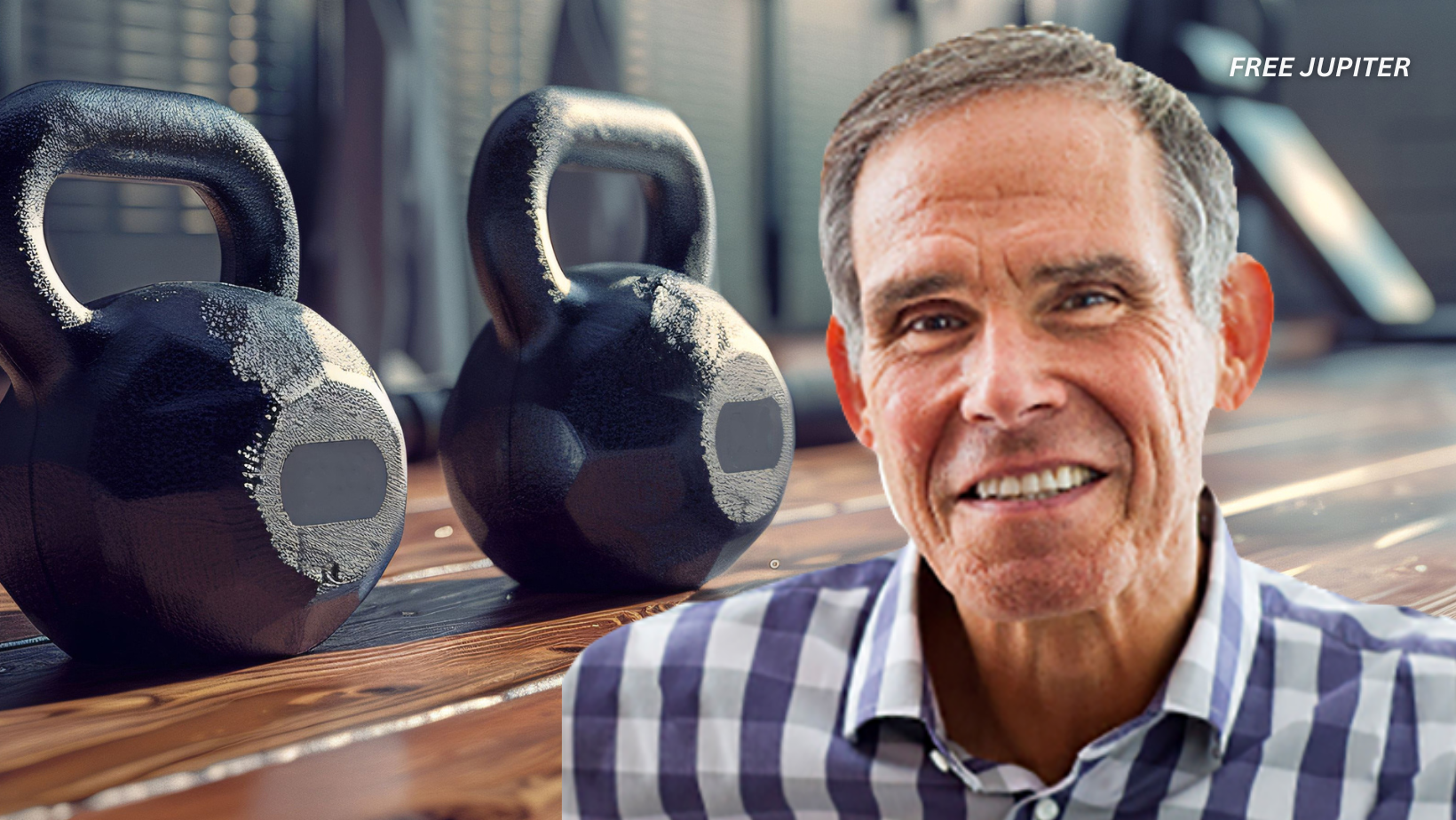Dr. Eric Topol is not just any cardiologist. He is one of the most respected voices in cardiovascular medicine and digital health innovation. At 70 years old, most people would expect him to slow down. Instead, he has managed to get fitter than ever by making a single change to his routine. He did not invest in fancy fitness gadgets or follow a complicated diet. He simply started lifting weights.
That one addition, strength training, transformed his physical health. As a longtime advocate of heart-healthy lifestyles, Dr. Topol (a cardiologist) already had a solid base of aerobic fitness. He walked daily and rode his bike regularly. But what he lacked, he came to realize, was muscle strength. Like many older adults, he had overlooked the power of resistance training.
Why a Cardiologist Emphasizes Muscle Health After 60
As people age, they experience a natural decline in muscle mass known as sarcopenia. This condition starts as early as age 30, accelerating in the 60s and 70s. Loss of muscle does more than weaken the body. It also increases the risk of falls, fractures, frailty, insulin resistance, and even heart disease.
Muscles are metabolically active tissue. They help regulate blood sugar, support bone density, and reduce inflammation. For older adults, maintaining or increasing muscle mass can dramatically affect longevity and independence. Dr. Topol realized that despite years of walking and cycling, his muscles were still weakening. That awareness prompted him to begin a regular strength training routine using weights and resistance bands.
The Turning Point, Resistance Training Three Times a Week
Dr. Topol, a cardiologist who started with simple dumbbell exercises and bodyweight movements. Squats, lunges, push-ups, and resistance band rows formed the core of his workout. He committed to training three times a week, keeping each session under 45 minutes. The goal was not bodybuilding. It was muscle preservation and functional strength.
Within months, he noticed significant improvements. His posture became more upright. Climbing stairs no longer left him winded. His balance improved. And most importantly, he felt more energetic. His blood pressure and cholesterol remained well-controlled, and his bone density even improved. These are not isolated outcomes. Scientific literature supports the benefits the cardiologist experienced.
Read More: Study Finds Men Twice as Likely to Die from ‘Broken Heart Syndrome’ as Women
The Science Behind Strength Training and Aging
According to the National Institutes of Health, strength training is one of the most effective interventions for preventing age-related physical decline. Unlike aerobic exercise alone, resistance workouts increase both muscular size and function. They also boost metabolism, preserve bone mineral density, and help regulate blood glucose.
A study published in the Journal of the American Geriatrics Society found that older adults who engaged in resistance training at least twice a week had a 46 percent lower risk of death from any cause than those who did not. Another study from Tufts University showed that strength training improved walking speed, stair-climbing ability, and balance in people aged 65 and older.
These findings are echoed in clinical practice guidelines from organizations such as the American Heart Association and the American College of Sports Medicine. Both recommend that adults over 65 engage in strength training at least twice a week for major muscle groups.
Cardiologist Addresses Fears and Misconceptions About Lifting at 70
Many older adults fear strength training. Some worry they are too old or too fragile. Others think they need expensive gym memberships or professional trainers. Dr. Topol, a cardiologist, is proof that none of these concerns should stop someone from starting.
He began training at home using inexpensive resistance bands and adjustable dumbbells. No gym required. He modified movements to suit his body and avoided exercises that caused discomfort. Gradually, his confidence grew. The key, he said, was consistency and listening to his body.
He also emphasized that resistance training does not mean heavy weights. The focus should be on controlled movements, proper form, and progressive resistance. Even light weights or bodyweight exercises can yield results if performed correctly.

Mental Benefits That Go Beyond the Physical
The benefits of strength training do not stop at physical health. Cognitive function also improves with regular resistance exercise. Studies have found that older adults who engage in strength training experience better memory, faster processing speeds, and reduced risk of dementia.
This is due in part to improved blood flow to the brain and the release of brain-derived neurotrophic factor, a protein that supports neural health. For Dr. Topol, these mental benefits are just as important as physical ones. As a researcher and writer, mental sharpness is essential to his daily life. He reports improved focus, better sleep, and a more positive mood since beginning his weight training journey.
Exercise as Medicine, A Cardiologist’s Perspective
Dr. Topol has long promoted exercise as a powerful form of medicine. But it was only after age 70 that he experienced the full scope of what strength training can do. He believes that if more people in his age group embraced resistance training, they would see improvements not just in health but in quality of life.
From a cardiovascular standpoint, the benefits are clear. Strength training reduces visceral fat, lowers blood pressure, improves lipid profiles, and enhances insulin sensitivity. These factors contribute to lower risks of heart attack, stroke, and type 2 diabetes.
The Centers for Disease Control and Prevention echoes this sentiment. They recommend strength training for all adults to improve longevity, independence, and disease resistance.
Read More: Think It’s a Heart Attack? Don’t Ignore These Signs—and Know What to Do
Customizing Strength Training for Older Adults
There is no one-size-fits-all routine. Dr. Topol suggests beginning with basic bodyweight exercises. Squats to a chair, wall push-ups, and standing calf raises are accessible to most people. As strength builds, resistance bands or light dumbbells can be added. Focusing on full-body movements helps maintain muscle balance and functional ability.
He recommends working with a physical therapist or fitness professional if one has mobility issues or chronic conditions. Form matters more than intensity. The goal is progress, not perfection.
Hydration, proper sleep, and adequate protein intake are also essential. Muscles need fuel to grow and repair. Older adults often under-eat protein, which can slow recovery. Ensuring 1.0 to 1.2 grams of protein per kilogram of body weight daily can support muscle health.
Small Change, Big Impact: Lessons From a Lifelong Doctor
Dr. Topol’s story is a reminder that fitness transformations do not require dramatic overhauls. A single new habit, practiced consistently, can change everything. He already had good cardiovascular health. What he lacked was muscular strength. By identifying that gap and addressing it with resistance training, he unlocked a new level of vitality.
Many adults focus on cardio because it feels safer or more familiar. But as Dr. Topol and countless studies confirm, strength training fills a crucial gap in long-term health. It supports balance, independence, energy, and confidence. It can be done at home, requires minimal equipment, and works well into older age.
Aging Strong, One Rep at a Time
At 70 years old, Dr. Eric Topol is not just surviving. He is thriving. The secret was not a miracle drug or a new technology. It was a pair of dumbbells and a commitment to regular strength training. This simple decision has reshaped his body, improved his health, and renewed his sense of purpose.
His journey is not unique. Many older adults can experience similar benefits by incorporating resistance exercises into their weekly routines. It is never too late to get stronger. It is never too late to add muscle. And it is never too late to feel better than ever.
In a world obsessed with quick fixes, the most powerful tool for aging well is remarkably simple. Strength training does more than protect the heart. It protects independence, dignity, and life itself.
Dr. Topol’s advice to his patients and peers is straightforward. Pick up some weights, start slow, and keep going. The results, he says, are worth every rep.










